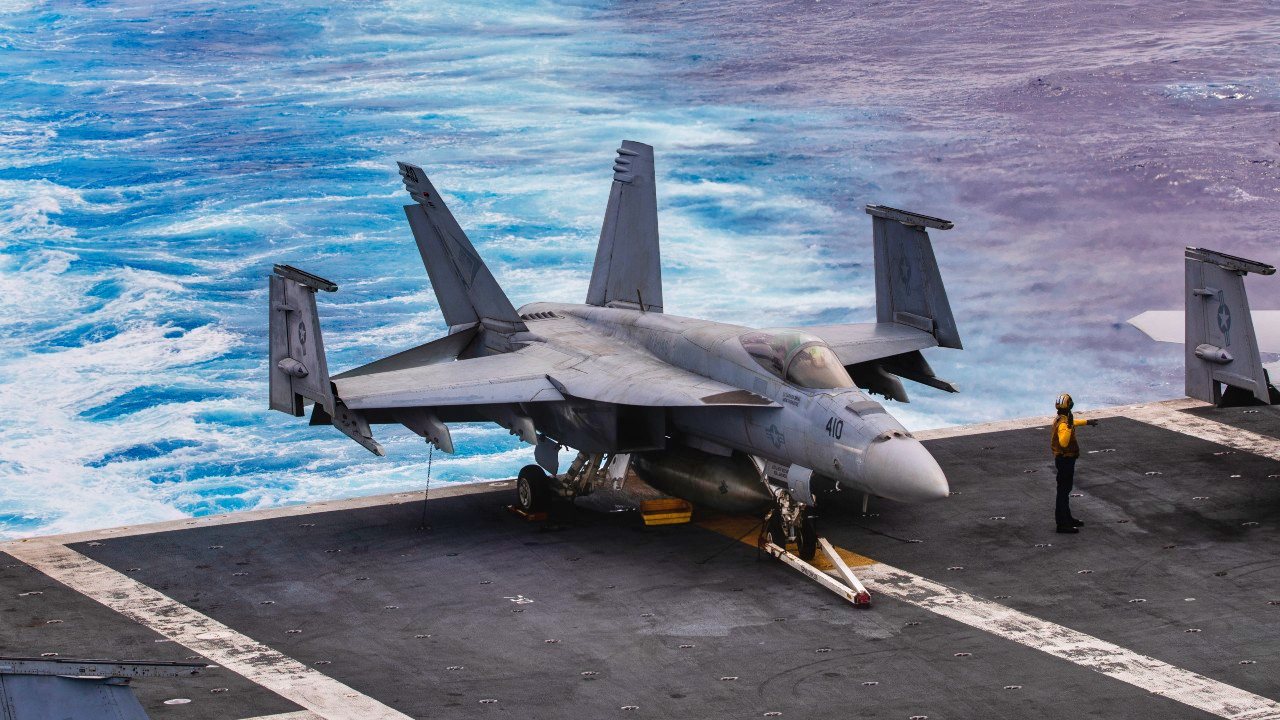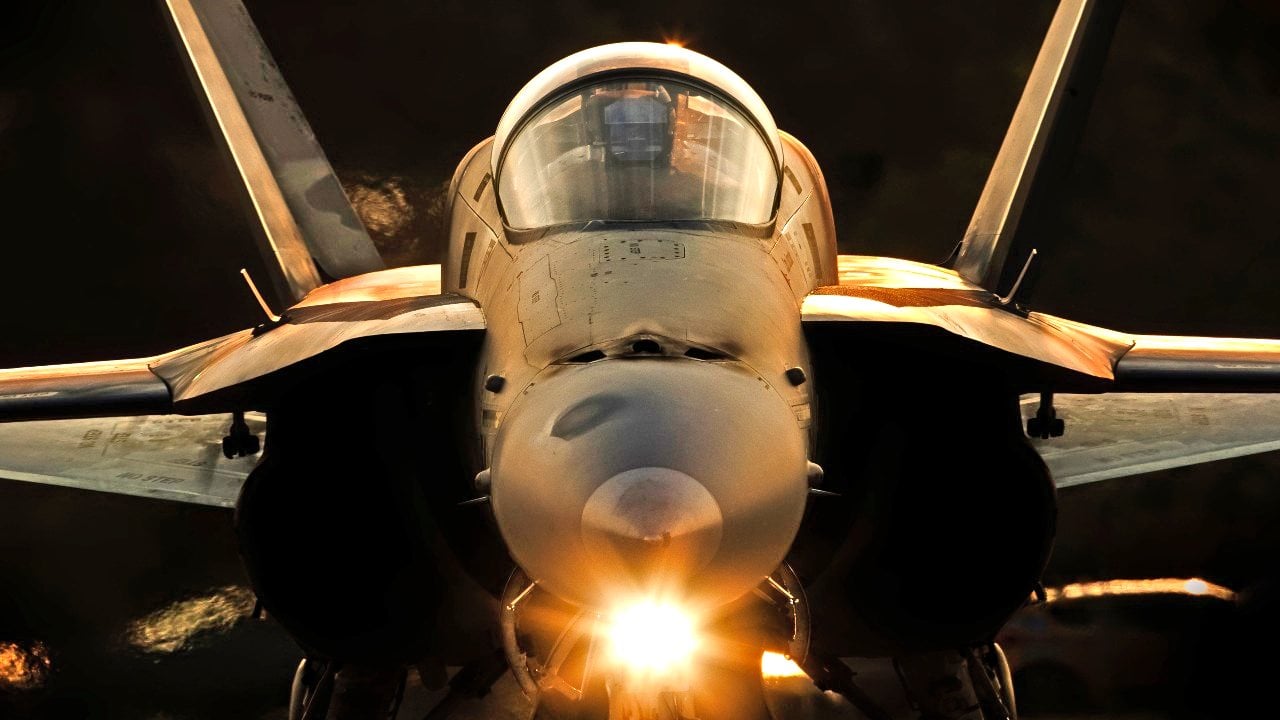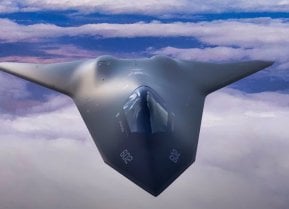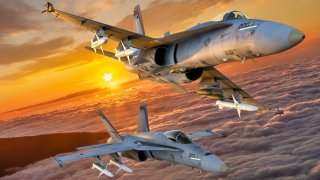U.S. Navy F/A-18 Super Hornets Now Have SM-6 Missiles (China Should Worry)
The U.S. Navy has announced a major advancement with the successful integration of the SM-6 missile onto carrier-based F/A-18E/F Super Hornets, designated as AIM-174B.
Summary and Key Points: The U.S. Navy has announced a major advancement with the successful integration of the SM-6 missile onto carrier-based F/A-18E/F Super Hornets, designated as AIM-174B.

-This air-launched variant significantly extends the Super Hornet's air-to-air engagement range, potentially reaching up to 300 miles, tripling the current reach of the AIM-120D AMRAAM. This development enhances the Navy's combat capabilities, especially in the context of anti-air and surface warfare.
-The AIM-174B's operational deployment is expected to be tested during the RIMPAC exercises, potentially showcasing its advanced capabilities. This move aligns with the Navy's ongoing efforts to counter growing threats from adversaries like China and strengthen its strategic position.
U.S. Navy's New Air-Launched SM-6: A Significant Upgrade in Aerial Warfare
An air-launched SM-6? Yes, please! The more of them the better. This week the news broke—and the U.S. Navy officially confirmed—that weapons engineers have successfully mated the latest version of the venerable Standard family of shipboard surface-to-air missiles to carrier-borne F/A-18E/F Super Hornet fighter/attack jets. The SM-6 recently proved its mettle in the Red Sea, swatting down Houthi drones and antiship missiles. And now it is “operationally deployed” in the naval-aviation community according to Navy PR folk.
Designated the AIM-174B, the air-launched SM-6 variant will at least double the Super Hornet’s reach for air-to-air engagements. Weapons range being a key determinant of tactical efficacy, that marks a substantial boost to the carrier air wing’s combat punch. The range of the AIM-120D Advanced Medium-Range Air-to-Air Missile (AMRAAM), till now the coin of the realm in U.S. carrier aviation, reportedly stands at somewhere around 100 miles. The ship-launched SM-6 boasts a range well in excess of 200 miles. Firing the missile from an aircraft streaking across the sky would bolster its launch velocity—and presumably its range along with it. By how much remains to be seen.
A reasonable guesstimate would be that the AIM-174B will boast a range somewhere in the neighborhood of 300 miles—triple the AMRAAM’s striking reach.
So much for the guesswork. We may soon have some inkling of the AIM-174B’s true characteristics. Imagery out of the Pacific theater shows a Super Hornet attached to Carrier Air Wing 2 on board USS Carl Vinson sporting the new bird. Carl Vinson is a nuclear-powered flattop taking part in the ongoing multinational Rim of the Pacific (RIMPAC) exercise. Navy leadership may elect to test the repurposed weapon at RIMPAC—though doubtless in ways designed not to divulge too much to dwellers in the wretched hive of scum and villainy.
The U.S. and fraternal armed forces have sunk or plan to sink five retired hulks in target practice this summer. The air-launched SM-6 could get a piece of the action. Let’s hope so.
There are upsides and downsides to publicly testing gee-whiz weaponry. Selective disclosure of capabilities can be a persuasive messaging tool, helping cow rivals while consoling allies, partners, and friends. It conveys prowess, convincing others the force doing the disclosing would be the likely victor should battle ensue. That being the case, rational antagonists should forego aggression while partners take heart. Indiscriminate disclosure betrays advantages (or technical defects or quirks) best kept secret till the time and place of battle.
But there’s more to the AIM-174B/SM-6 than air-to-air warfare. In fact, if the United States, its allies, and its partners manage to outcompete China and other potential foes in the coming years, the SM-6 will be a worthy nominee for the contest’s MVP. Not that many years ago commentators like your humble scribe fretted over the state of surface warfare—meaning ship-on-ship warfare—in the U.S. Navy. That’s because the sea service rested on its laurels following the Cold War. Service chieftains and their political masters talked themselves into believing victory over the Soviet Union was forever. There was no peer challenger now that the Soviet Navy sat rusting at its moorings. Nor, proclaimed naval leaders, was a new challenger coming.
Naval history had ended.
Once that conviction took hold, the service saw little need to prepare to fight for maritime command. Directives from on high announced that the fleet could and should let surface warfare, anti-air warfare, and anti-submarine warfare—hardware and skills necessary to duel a peer navy for supremacy—languish. And so it did. The navy retired an ultra-long-range Tomahawk anti-ship missile, went back to relying on elderly short-range Harpoon anti-ship missiles, and ultimately stopped equipping its surface combatants even with those.
Meanwhile, China put a premium on range as it built a great navy and outfitted it lavishly with anti-ship missiles.
Until recent years, as a result, the People’s Liberation Army Navy (PLA Navy) battle fleet outranged the U.S. Navy fleet by a wide margin. In naval warfare as in boxing, advantages go to the rangier pugilist. Even if PLA Navy weaponry remained inferior, the range mismatch granted Chinese rocketeers the option to aim haymakers at their American foe long before that foe closed to Harpoon range. Some of that ordnance could get through if delivered in sufficient volume—enfeebling the U.S. fleet before it could return fire. At a minimum PLA Navy volleys would compel U.S. warships to expend precious missiles in self-defense—depleting their arsenals through sustained assault.
To its credit, the U.S. Navy and Pentagon leadership belatedly realized the fleet had a problem owing to China’s upstart armada. Senior leadership set in motion crash missile-development programs that have now begun to pay off in the form of such armaments as the Long-Range Anti-ship Missile, or LRASM, a munition now finding its way into fleet magazines. As long ago as 2016, though, the Pentagon’s Strategic Capabilities Office managed to repurpose the SM-6 to strike hostile surface vessels. The navy sank the decommissioned frigate Reuben James with an SM-6 shot that year—and abruptly started closing the range deficit vis-à-vis the PLA Navy battle fleet. Equipping carrier warplanes with the munition only widens and deepens its place in the U.S. naval panoply.

When two rangy combatants face off, whoever lands the heavier hits wins. That’s a fair fight.
But there’s still more to the SM-6 than surface or air-to-air combat. The U.S. Army is procuring rounds for its Typhon surface-to-surface missile system. Fielded under the Army’s “multidomain operations” concept, small missile-armed units can deploy to islands, likely in the Pacific, to bar access to the islands themselves and to the waters and skies around them. Stationed along Asia’s first island chain, ground troops can preserve the sovereignty and territorial integrity of U.S. allies, partners, and friends while denying Chinese shipping and aircraft access to the Western Pacific and points beyond. Barricading the island chain would put the military and economic hurt on Beijing—with any luck deterring Xi Jinping & Co. from misadventures in the Taiwan Strait or China seas.
The next step to harvest full value from the AIM-174B/SM-6 is to field them in bulk, and fast. The obvious limits on this project are budgetary and industrial in nature. This is a pricey weapon, coming in at a cool $4.3 million per copy (as of fiscal 2021). Buying in volume is hard given such figures. Nor can industry manufacture complex armaments in a hurry, the way weapons factories of old once turned out mountains of bullets and shells. As Pentagon officials told this week’s NATO summit in Washington DC, the greatest contribution the allies can make to the common defense is to expand their defense-industrial complexes. That’s true as a general rule. Just look at fitful Western efforts to supply Ukraine with armaments.
And it’s specifically true of the AIM-174B/SM-6 enterprise. Expanding production capacity is a must.
Nevertheless. Bitter tears are being wept, teeth gnashed, and garments rent in such precincts as Beijing, Moscow, and Tehran. One cannot but laugh. Great-power strategic competition is not over—it never is. But there is cause to be upbeat.
About the Author: Dr. James Holmes
Dr. James Holmes is J. C. Wylie Chair of Maritime Strategy at the Naval War College and a Distinguished Fellow at the Brute Krulak Center for Innovation & Future Warfare, Marine Corps University. The views voiced here are his alone.
All images are Creative Commons and/or Shutterstock.


